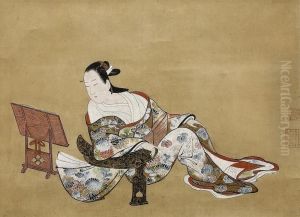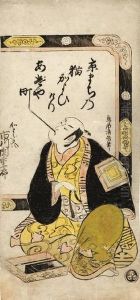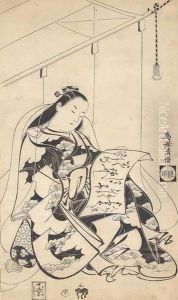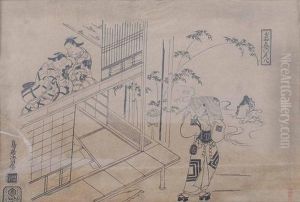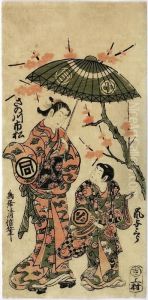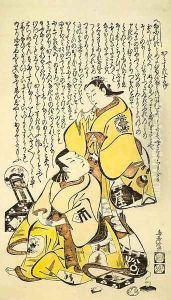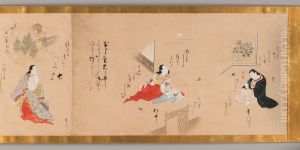Torii Kiyomasu Paintings
Torii Kiyomasu was a prominent Japanese ukiyo-e artist, whose exact birth date remains unknown, but who is believed to have been active in the late 17th and early 18th centuries, with his death recorded in 1716. Kiyomasu was a pivotal figure in the Torii school, which played a significant role in the development of the ukiyo-e genre, particularly in the realm of kabuki theater-related prints. The school's name, Torii, references the 'torii' or traditional Japanese gateways that mark the entrance to Shinto shrines, symbolizing the school's initial involvement in creating banners and decorations for religious and theatrical events.
Kiyomasu's work is characterized by its dynamic portrayal of kabuki actors, sumptuous use of color, and the elegant, fluid lines that define the figures. He was adept at capturing the vivacity and drama of kabuki theater, which was a central entertainment form during the Edo period. His prints often served as advertisements for performances and as souvenirs for theatergoers, who were eager to keep a piece of the spectacle for themselves. This was a time when the cult of celebrity surrounding kabuki actors was at its peak, and Kiyomasu's prints played a crucial role in promoting these stars of the stage.
In terms of style, Kiyomasu is noted for his contributions to the development of the 'benizuri-e' technique, which involved the use of limited color palettes to enhance the visual impact of prints. This technique was a precursor to the more sophisticated full-color 'nishiki-e' prints that would dominate ukiyo-e in the later 18th century. His works, therefore, mark an important evolutionary step in the genre, bridging the gap between the monochromatic 'sumizuri-e' prints and the vibrant polychrome prints that followed.
Despite his significant contributions to the art of ukiyo-e, many details of Torii Kiyomasu's life remain shrouded in mystery, including the exact dates of his birth and death. What is clear, however, is his lasting influence on the world of Japanese woodblock printing and his role in shaping the visual culture of his time. His legacy is preserved through his surviving prints, which continue to be celebrated for their beauty and historical value.
